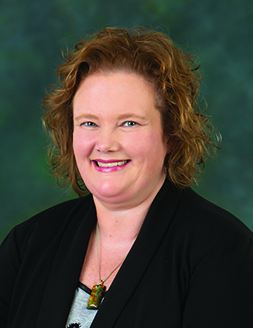 By Claire Jubb, Assistant County Administrator, Charlotte County
By Claire Jubb, Assistant County Administrator, Charlotte County
Disasters, both large and small, can result in the need to facilitate housing for residents who may have been displaced. This is not easy to navigate, especially when you are in the midst of recovery and there are many competing priorities.
If the Natural Emergencies legislation proposed this year passes (SB 250 and HB 7057), jurisdictions will not be allowed to prohibit the placement of temporary structures for use by the resident of a damaged structure damaged during a state of emergency.
To ensure the long-term viability of the community, it is essential that displaced residents are provided with assistance to stay as close to their homes as possible. Moving them to other locations removes them from their families and support systems, schools, employment and medical services. Often those in our communities that struggle before a disaster have the least ability to resolve their situation after a disaster, and that’s where local governments, the State and FEMA come in.
I will focus on FEMA disaster housing as this is probably one of the more complex areas to navigate. FEMA will provide disaster housing to those that qualify based on the level of damage and their ability to resolve the situation. Initially FEMA is focused on temporary solutions such as providing hotel vouchers or even vacation rental accommodation for those in need. But with limited rooms and properties available, FEMA will switch to assessing the need and providing travel trailers or mobile homes for residents.
FEMA looks for different solutions to provide this housing, and having a framework set up in advance will help navigate and speed up the process.
Try to have regulations in place before an event regarding the placement of both mobile homes and trailers in residential neighborhoods. Although statutorily, the requirement to allow them may soon be negated, where they go and how they are placed is important. Minimizing impacts on the surrounding neighborhoods and managing the expectations of those neighbors is important.
Rebuilding after a storm is neither quick nor easy. Residents will spend months navigating through insurance claims, FEMA assistance and SBA loans before they can even begin to contract for work to be done. After that, they have permits, and finally, construction. It can take months, if not years, before they can return to their homes. Emphasizing that recovery is a marathon and not a sprint, and asking for patience from our residents who may not be as badly impacted or who were able to resolve their situation quicker is a big part of keeping the community together.
Understand that FEMA will want to know how these units will be permitted, what foundation systems are allowed, where they can go regarding setbacks and driveways and what utility connections will be needed. These are SOPs you can prepare in advance. Also, have ready some type of easy-to-navigate registration process to ensure the jurisdiction can track the units and where they will be placed.
This will be important as repairs and rebuilds are complete and travel trailers and mobile homes become a code enforcement issue.
Along with placing travel trailers and mobile homes on residential developed lots, FEMA will look for space in commercial mobile home and RV parks. This is a great solution as very little is needed to set up these units, and they can often be used very quickly.
The final solution that FEMA will work on is group sites. These are often referred to as FEMA villages and had a bad reputation in years past. Following Hurricane Charley in 2004, Charlotte County had a FEMA village which was operational for many years after the storm. It was placed in a remote area of the county with very little oversight from FEMA and much of the enforcement of the sites was left to the local sheriff’s department and Code Enforcement.
Group sites are the last resort for FEMA and they will only be developed if there are no other alternatives. They are expensive and take a long time to develop. FEMA anticipates Charlotte County’s first of two group sites will have residents at the beginning of July, nine months after the storm.
Keeping all agencies informed about the progress is critical during the development of the site to allow input into the design and safety of both the site residents, and the neighborhoods.
FEMA has made progress in how they handle group sites. There is an emphasis on casework for residents to help them resolve their situation, rules and regulations for residents, oversight and security at the site and a-hands-on approach. Charlotte County has yet to see how this will play out, but we are confident that we have done all we can do to facilitate the group site’s success and are prepared to help the residents get their lives back together.
Disaster housing is not easy. It can be emotionally charged for all involved and is something jurisdictions rarely have to handle. Being prepared, communicating early and often, planning for the future, and managing expectations will help throughout the process. Leaning on others who have experience is very helpful, and unfortunately, Florida and FCCMA, have a lot of experience. Reaching out to other agencies and adopting best practices will help as we work through these issues together.





